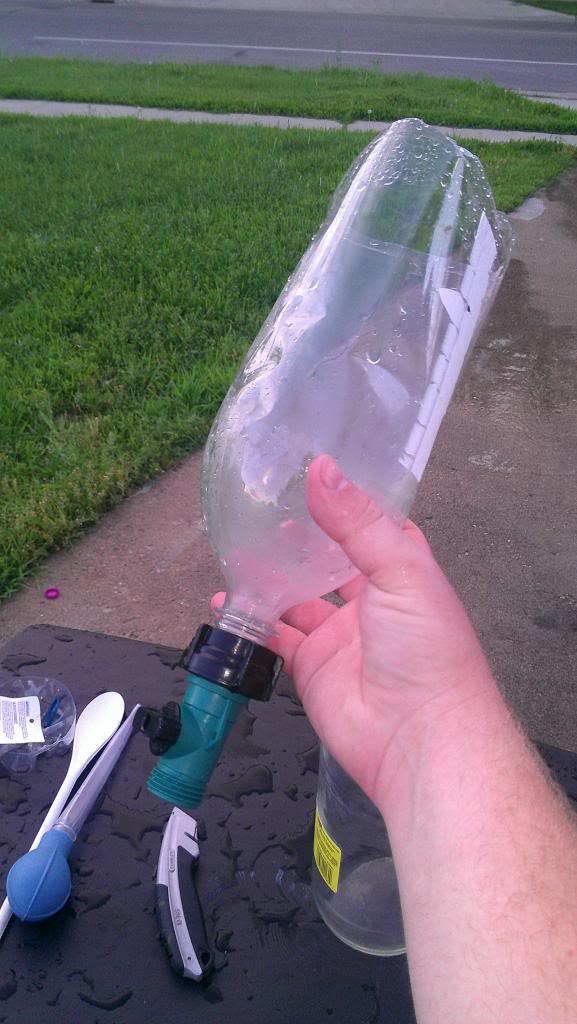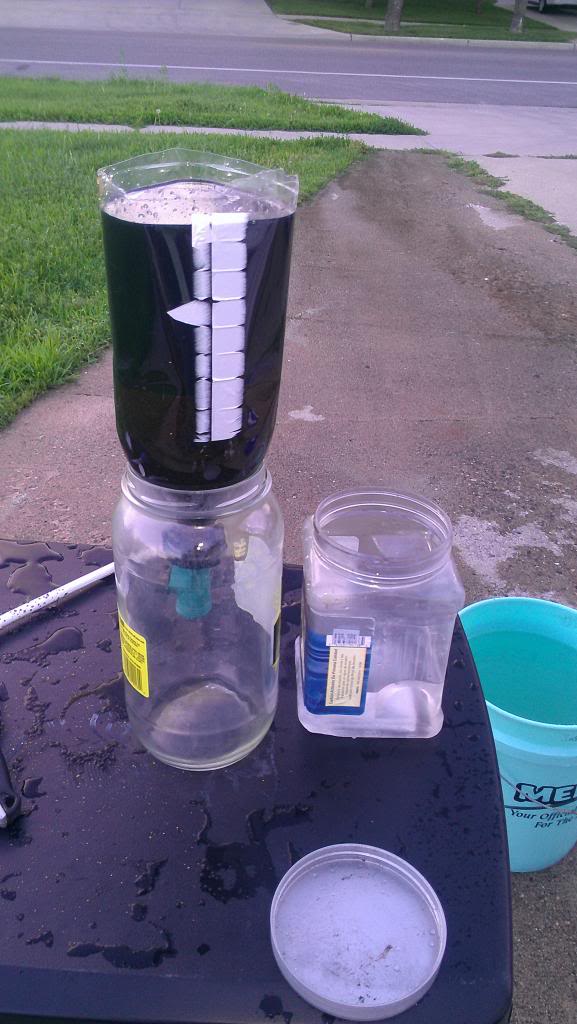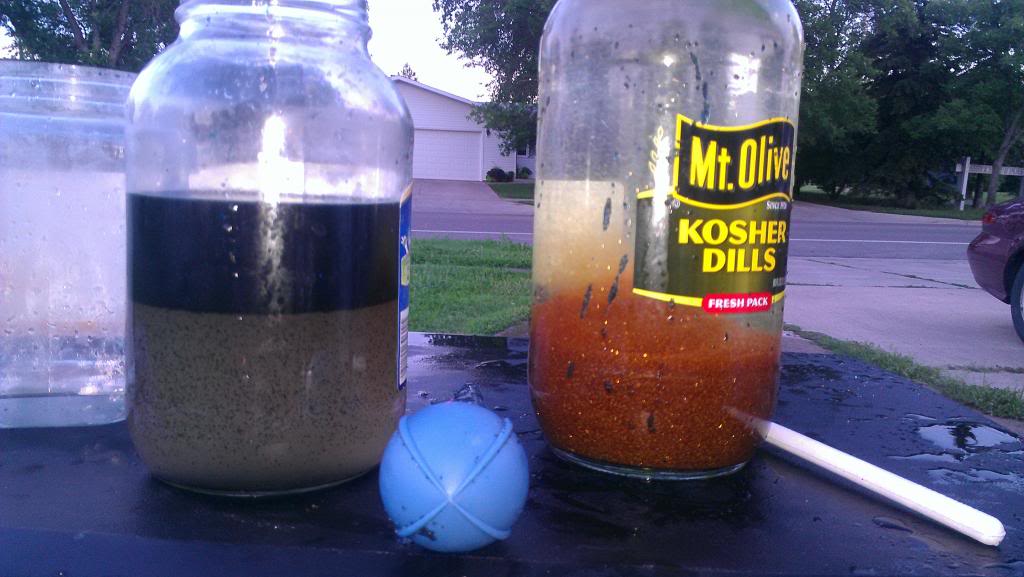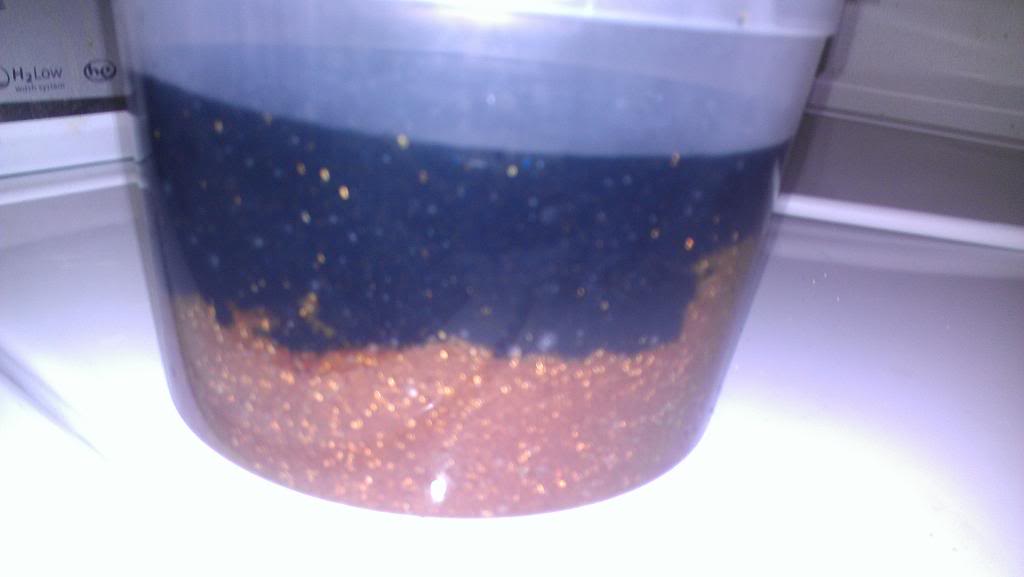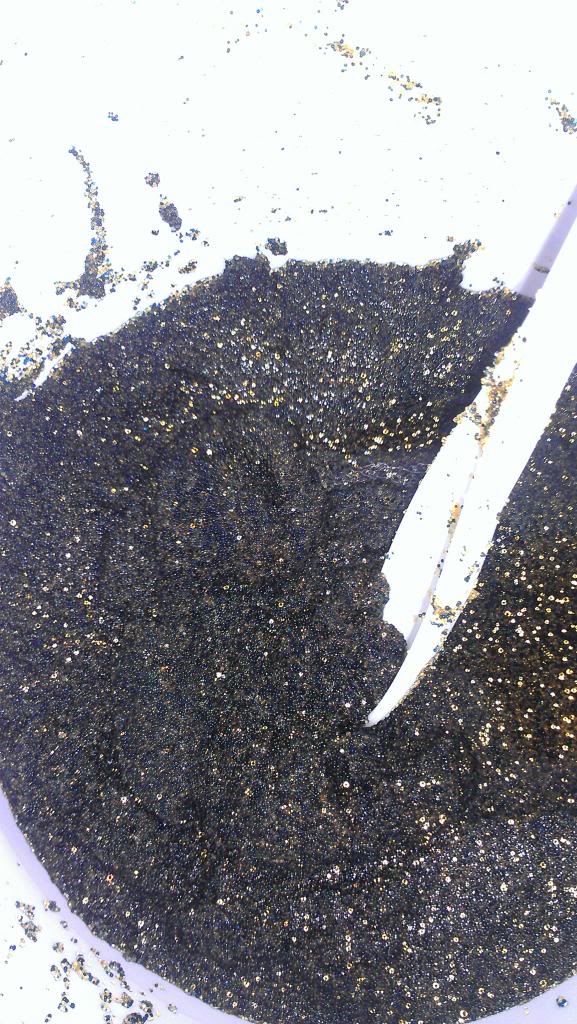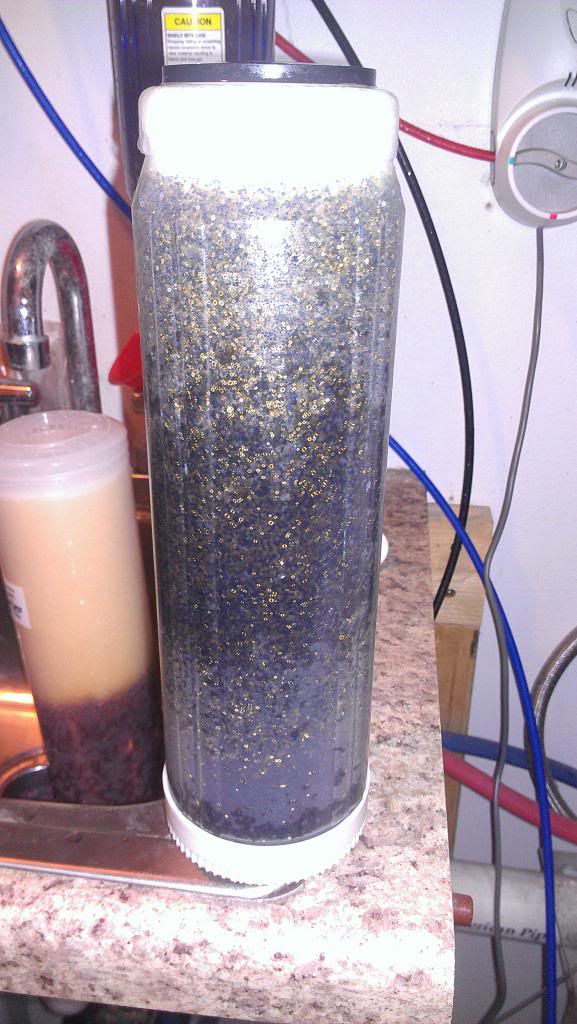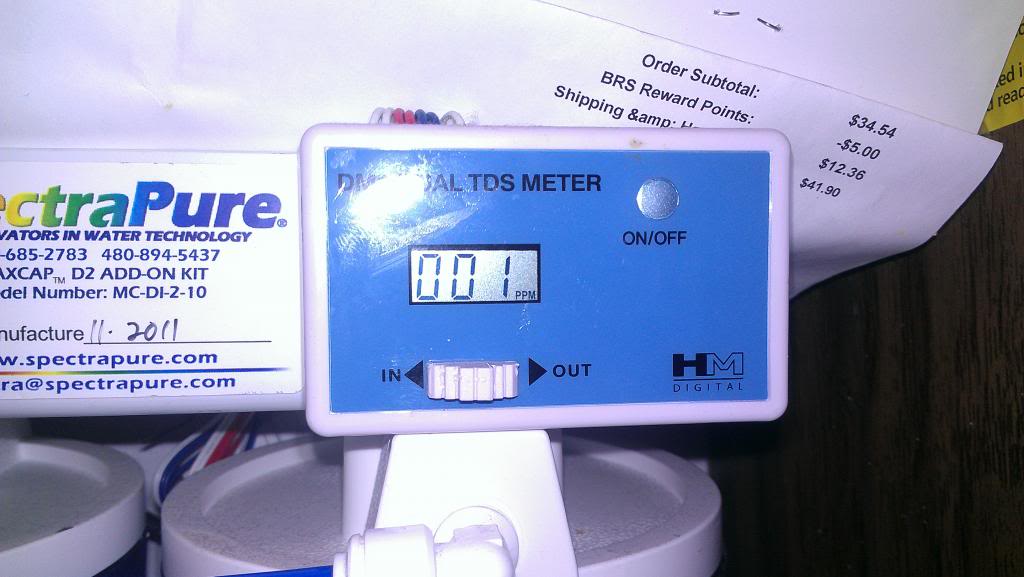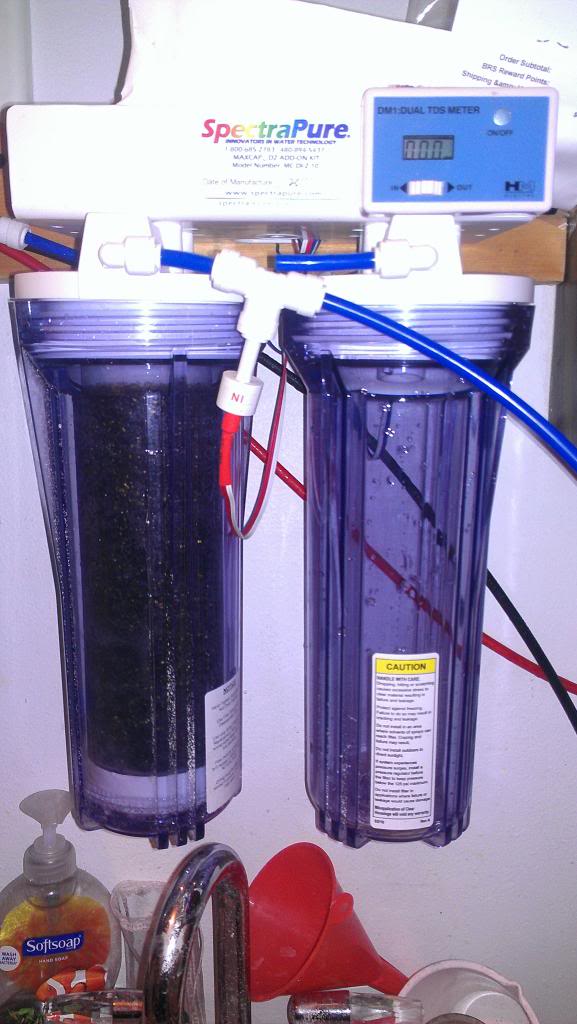So I will begin this off with, I am aware of the dangers associated with the chemicals used and all safety precautions were accounted for... Also I am aware that there are some out there who will say this is not worth my time and to just buy new stuff. However I am a person who likes to at least try something that seems plausible once and let my personal experiences support whether or not it is a good choice for myself.
I am following the steps outlined in the following website: How to Recharge DI Resin » Reef'd Up Aquatics or http://reefkeeping.com/issues/2008-09/nftt/index.phphttp://reefkeeping.com/issues/2008-09/nftt/index.php. I will not report the directions here as they are all over the place. This thread will show what I did and why it did or did not work...
Here are my reasons of why I would like to try regenerating the DI resin:
1. Cost savings - In West Fargo there is a large amount of CO2 and sediment in the tap water. The high amount of CO2 causes my DI resin to be exhausted in approximately 50 - 100 gallons of good filtered water. This adds up over time as my top off alone takes approximately 15 gallons per week... $50 in DI resin will last me less than 3 months.
2. Landfill Reduction - If the resin can be regenerated, there is no need for it to end up in a landfill. I know it is small particles and takes up very little space, but every small impact is still an impact.
3. Personal Achievement - I want to see if it can be done as easily as it says on the websites.
My first attempt happened on 7/10/2013. The one product I was unable to find was the Roebic brand drain cleaner. I substituted with Zep Crystal Heat Drain Opener as pictured below:

I followed the directions as they were written. However the two resins never separated. They seemed to stack on top of each other with no gap in the liquid Lye solution. I attempted the turkey baster method, but it was hard to get it all. When I was done the directions say the brown colored stuff was the stuff to go to the acid. It was supposed to turn purple, but it never did.
My mistake was the drain opener substitution. It is not 100% Lye and had some other caustic chemicals in it as well as aluminum shavings. due to the contamination, the test was aborted and 2 pounds of resin wasted...
Next step is to go to Tractor Supply and get the Roebic brand 100% Lye and do another attempt next week. Through some searching I finally found a local place that carries it.
Anyone know of any other places that carry this specific brand?
Do you know of any other brand that works just as well? (include store to get it at)
Please feel free to add your experiences and thoughts to this thread.
I am following the steps outlined in the following website: How to Recharge DI Resin » Reef'd Up Aquatics or http://reefkeeping.com/issues/2008-09/nftt/index.phphttp://reefkeeping.com/issues/2008-09/nftt/index.php. I will not report the directions here as they are all over the place. This thread will show what I did and why it did or did not work...
Here are my reasons of why I would like to try regenerating the DI resin:
1. Cost savings - In West Fargo there is a large amount of CO2 and sediment in the tap water. The high amount of CO2 causes my DI resin to be exhausted in approximately 50 - 100 gallons of good filtered water. This adds up over time as my top off alone takes approximately 15 gallons per week... $50 in DI resin will last me less than 3 months.
2. Landfill Reduction - If the resin can be regenerated, there is no need for it to end up in a landfill. I know it is small particles and takes up very little space, but every small impact is still an impact.
3. Personal Achievement - I want to see if it can be done as easily as it says on the websites.
My first attempt happened on 7/10/2013. The one product I was unable to find was the Roebic brand drain cleaner. I substituted with Zep Crystal Heat Drain Opener as pictured below:
I followed the directions as they were written. However the two resins never separated. They seemed to stack on top of each other with no gap in the liquid Lye solution. I attempted the turkey baster method, but it was hard to get it all. When I was done the directions say the brown colored stuff was the stuff to go to the acid. It was supposed to turn purple, but it never did.
My mistake was the drain opener substitution. It is not 100% Lye and had some other caustic chemicals in it as well as aluminum shavings. due to the contamination, the test was aborted and 2 pounds of resin wasted...
Next step is to go to Tractor Supply and get the Roebic brand 100% Lye and do another attempt next week. Through some searching I finally found a local place that carries it.
Anyone know of any other places that carry this specific brand?
Do you know of any other brand that works just as well? (include store to get it at)
Please feel free to add your experiences and thoughts to this thread.
Last edited:









